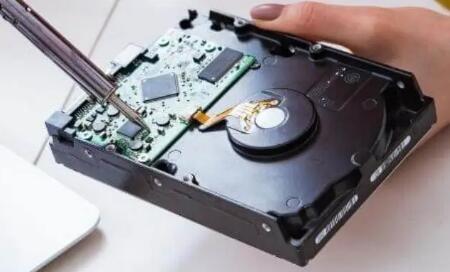Hard disk data recovery involves retrieving lost, corrupted, or inaccessible data from a damaged or malfunctioning storage device. Recovery may be logical (software-level) or physical (hardware-related), and each type significantly influences the cost.
Types of Recovery Services
Logical Recovery: Involves retrieving data from drives with no physical damage. Causes include accidental deletion, formatting, malware, and file system errors.
Physical Recovery: Requires hardware repair due to head crashes, motor failures, PCB damage, or platter issues.

Hybrid Recovery: A combination of logical and physical efforts when both hardware and file structure are compromised.
Key Factors Affecting Hard Disk Recovery Charges
Type and Severity of Damage
Logical failures typically cost less than physical damage.
Severe physical issues like platter damage can be highly complex and expensive.
Hard Disk Size and Storage Capacity
Larger drives take longer to scan and extract data, increasing labor time.
Drives with more data require higher processing and storage during recovery.
Drive Brand and Model
Proprietary or uncommon drives may require specialized tools or expertise.
SSDs, hybrid drives, and encrypted drives can pose unique challenges.
Turnaround Time
Expedited or emergency services can double or triple the base cost.
Standard recovery typically takes 3-10 business days.
Cleanroom Requirements
Physical repairs must be conducted in a certified cleanroom to prevent further contamination.
Cleanroom environments significantly add to the service cost.
Success Rate and Diagnostic Fees
Some services charge a flat diagnostic fee regardless of outcome.
Others offer a “no data, no charge” policy, minimizing upfront risk.
Data Volume and File Type
Recovery of specific files (e.g., video, database files) may be more difficult and time-intensive.
Clients needing full disk image extraction will pay more than selective recovery.
Typical Hard Disk Recovery Price Ranges
Here is a general breakdown of recovery costs in the industry:
Logical Recovery
Basic data retrieval (deleted files, formatting): $100 – $500
Malware-infected or corrupted files: $300 – $700
Physical Recovery
Minor hardware repair (e.g., replacing PCB): $400 – $800
Major mechanical damage (e.g., head crash, motor failure): $700 – $2000+
Advanced Recovery
RAID arrays, encrypted drives, SSDs: $1000 – $5000
Emergency Recovery Services
24- to 48-hour service: Additional $500 – $1500 premium
Note: These prices vary depending on location, provider reputation, and complexity.
Service Models and Cost Transparency
Recovery service providers offer different pricing structures:
Flat Rate: Predictable, but may not reflect actual complexity.
Tiered Pricing: Based on damage type and difficulty.
Hourly Rate: Common for technician-based services and consulting.
Contingency-Based: Charges only if recovery is successful (common in trusted firms).
Always request detailed estimates and make sure the provider outlines:
Diagnostic fees
Recovery cost range
Turnaround options
Data confidentiality agreements
How to Choose a Cost-Effective Recovery Service
Evaluate Provider Reputation
Read online reviews and check certifications (e.g., ISO, SOC).
Look for experience with your specific drive type and issue.
Ask About Success Rate and Guarantee
Choose providers that offer “no recovery, no fee” policies.
Inquire about success rates in similar cases.
Check Cleanroom Certification
Ensure Class 100 or better cleanroom for physical repairs.
Avoid Hidden Fees
Be cautious of vague pricing or charges for “file previews.”
Consider Local vs. National Labs
Local services may offer better turnaround and pricing.
National labs often have higher capabilities for severe damage.
Inquire About Data Security
Ensure compliance with data privacy standards.
Ask about data erasure after delivery.
DIY vs. Professional Recovery: Cost Comparison
While DIY recovery is cheaper, it carries risks:
DIY Pros:
Low cost (free to $100 for software)
Fast if data is easily accessible
DIY Cons:
May worsen damage if used on failing drives
No cleanroom or hardware expertise
Limited success for physical issues
Professional Recovery Pros:
High success rate
Handles complex and physical failures
Secure and confidential
Professional Cons:
Higher cost
Longer wait times
Cost-Saving Tips for Consumers
Act Quickly
Stop using the drive immediately to avoid overwriting data.
Use Free Diagnostic Tools
Identify issues before paying for service.
Back Up Before Disaster
Use automated backup solutions to prevent future data loss.
Choose Targeted Recovery
Only recover the essential files to reduce cost.
Compare Providers
Obtain at least three quotes for comparison.
Understanding Value Beyond Price
Choosing a recovery service should not be based on price alone. Consider:
Data Importance: Priceless family photos or critical business files.
Downtime Cost: Business losses from operational delays.
Future Protection: Reliable services may include consultation on preventive measures.
Case Studies: Real Recovery Cost Examples
Case 1: Home User with Deleted Photos
Scenario: Accidental deletion on 1TB drive
Solution: Logical recovery, quick scan
Cost: $250
Case 2: Small Business Server Failure
Scenario: RAID 5 crash with corrupted drives
Solution: RAID reconstruction, physical repair
Cost: $3800
Case 3: Freelance Videographer’s External HDD
Scenario: External hard drive dropped
Solution: Head replacement, data imaging
Cost: $1300
About us and this blog
Panda Assistant is built on the latest data recovery algorithms, ensuring that no file is too damaged, too lost, or too corrupted to be recovered.
Request a free quote
We believe that data recovery shouldn’t be a daunting task. That’s why we’ve designed Panda Assistant to be as easy to use as it is powerful. With a few clicks, you can initiate a scan, preview recoverable files, and restore your data all within a matter of minutes.

 Try lt Free
Try lt Free Recovery success rate of up to
Recovery success rate of up to









